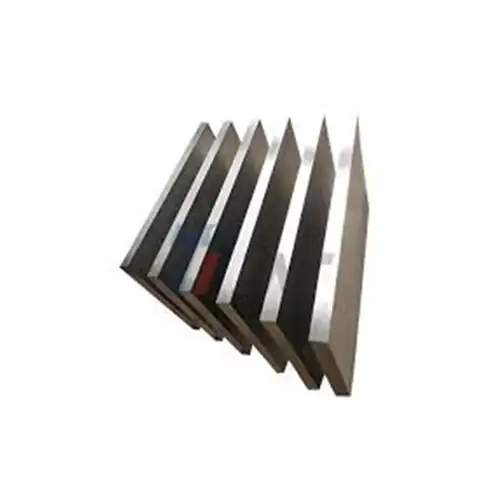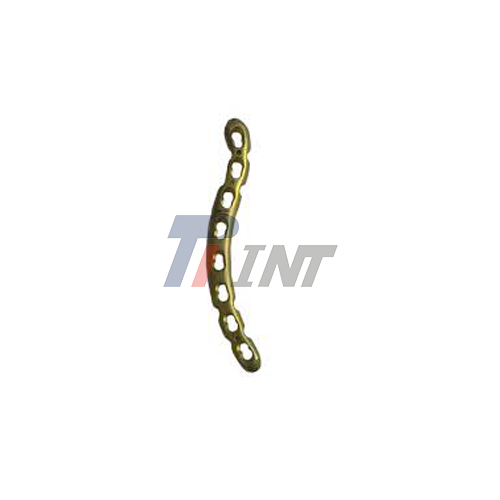Understanding Titanium Plates for Clavicle Fractures
A titanium plate clavicle fracture fixation is a surgical procedure that involves using a specially designed titanium plate to stabilize and align the broken clavicle (collarbone). This method has gained popularity due to its effectiveness in treating complex or displaced fractures that may not heal properly with conservative treatments like slings or braces.
Titanium plates are crafted from medical-grade titanium alloy, known for its exceptional biocompatibility and durability. These plates are carefully shaped to match the contours of the clavicle and are secured in place using small screws. The result is a robust and stable fixation that supports the bone as it heals, reducing the risk of malunion or nonunion.
Advantages of Titanium Plates in Clavicle Fracture Treatment
The use of titanium plates in clavicle fracture treatment offers several notable advantages:
- Excellent Biocompatibility: Titanium is highly biocompatible, minimizing the risk of rejection or adverse reactions. This property ensures a safer healing process for patients.
- Lightweight and Durable: Despite their strength, titanium plates are remarkably lightweight. This characteristic makes them comfortable for patients and easy for surgeons to handle during the procedure.
- Corrosion Resistance: Titanium's natural resistance to corrosion ensures long-term stability and reliability, even in the harsh environment of the human body.
- High Strength-to-Weight Ratio: This unique property allows titanium plates to provide optimal support and flexibility, crucial for the clavicle's natural range of motion.
- Fatigue Resistance: Titanium plates exhibit exceptional resistance to fatigue, maintaining their structural integrity even under the constant stress of bone healing and movement.
The Surgical Process: What to Expect
The surgical process for titanium plate clavicle fracture fixation typically involves the following steps:
- Preoperative Assessment: The surgeon evaluates the fracture using X-rays or CT scans to determine the best approach.
- Anesthesia Administration: General anesthesia is usually administered to ensure patient comfort during the procedure.
- Incision and Exposure: A small incision is made over the clavicle to access the fracture site.
- Fracture Reduction: The surgeon carefully aligns the broken bone pieces.
- Plate Placement: A titanium plate is selected and customized to fit the patient's anatomy. It is then positioned over the fracture site.
- Fixation: The plate is secured to the bone using titanium screws, ensuring stable fixation.
- Closure: The incision is closed with sutures, and a sterile dressing is applied.
This procedure typically takes 1-2 hours, depending on the complexity of the fracture. Patients can usually return home the same day or after a short hospital stay.
Recovery and Rehabilitation After Titanium Plate Clavicle Fracture Surgery
Immediate Post-Operative Care
The initial recovery phase after titanium plate clavicle fracture surgery is crucial for proper healing. Here are some key points to remember:
- Pain Management: Your doctor will prescribe pain medication to manage discomfort in the days following surgery.
- Immobilization: A sling or shoulder immobilizer will be provided to protect the surgical site and promote healing.
- Wound Care: Keep the incision site clean and dry. Follow your surgeon's instructions for dressing changes.
- Rest and Elevation: Adequate rest is essential. Elevate your arm when lying down to reduce swelling.
- Ice Therapy: Apply ice packs to the affected area to minimize swelling and discomfort.
Progressive Rehabilitation
As healing progresses, your rehabilitation will focus on restoring strength and range of motion. This process typically includes:
- Gentle Range of Motion Exercises: Usually begin 1-2 weeks after surgery, under the guidance of a physical therapist.
- Strengthening Exercises: Introduced gradually, typically starting 4-6 weeks post-surgery.
- Posture Training: Proper posture is crucial for optimal healing and preventing future issues.
- Activity Modification: Gradual return to daily activities, with restrictions on heavy lifting or contact sports for several months.
Long-Term Recovery and Follow-Up
Complete recovery after titanium plate clavicle fracture surgery can take several months. Regular follow-up appointments with your surgeon are essential to monitor healing progress. X-rays will be taken periodically to assess bone union and plate position. Most patients can return to full activities, including sports, within 3-6 months, depending on individual healing rates and the nature of their activities. It's crucial to follow your surgeon's and physical therapist's guidance throughout the recovery process to ensure optimal outcomes.
Potential Complications and Long-Term Considerations
Possible Complications
While titanium plate clavicle fracture fixation is generally safe and effective, it's important to be aware of potential complications:
- Infection: Although rare, surgical site infections can occur. Proper wound care and antibiotic prophylaxis help minimize this risk.
- Hardware Irritation: Some patients may experience discomfort from the plate or screws, particularly if they are thin or highly active.
- Nonunion or Malunion: While less common with plate fixation, improper healing can still occur in rare cases.
- Nerve or Blood Vessel Injury: These are rare complications that can occur during surgery.
Long-Term Considerations
Many patients wonder about the long-term implications of having a titanium plate in their clavicle. Here are some key points to consider:
- Plate Removal: In most cases, the titanium plate can remain in place indefinitely without causing problems. However, some patients opt for plate removal after complete healing, typically after 12-18 months.
- Airport Security: Modern titanium implants generally do not set off metal detectors, but it's advisable to carry a medical card describing your implant.
- Future Imaging: Titanium plates are compatible with MRI and CT scans, although they may cause some local image distortion.
- Long-Term Durability: Titanium plates are designed for long-term use and typically do not degrade or lose effectiveness over time.
Ongoing Research and Innovations
The field of orthopedic surgery is continually evolving, with ongoing research into improving titanium plate designs and surgical techniques. Some areas of focus include:
- Development of bioabsorbable plates that dissolve over time
- Enhanced plate designs for better anatomical fit and reduced irritation
- Incorporation of growth factors or other biologics to promote faster healing
- Minimally invasive techniques for plate insertion
These advancements promise to further improve outcomes and patient satisfaction in the treatment of clavicle fractures.
Conclusion
Titanium plate clavicle fracture fixation represents a significant advancement in the treatment of complex clavicle fractures. By offering superior stability, promoting faster healing, and allowing for earlier mobilization, this technique has improved outcomes for many patients. However, successful treatment involves more than just the surgical procedure. A comprehensive approach, including proper post-operative care, dedicated rehabilitation, and patient education, is crucial for optimal recovery.
If you're considering titanium plate fixation for a clavicle fracture or have recently undergone this procedure, remember that every patient's journey is unique. Always follow your healthcare provider's specific instructions and don't hesitate to ask questions or seek clarification about your treatment plan. For more information about titanium plates for clavicle fractures or to explore our range of high-quality medical titanium products, please contact us at export@tiint.com. Our team of experts is dedicated to advancing orthopedic care through innovative titanium solutions.










 2025-06-24 10:06:14
2025-06-24 10:06:14


_1752463076575.webp)
_1750667964882.webp)
_1750663525879.webp)
_1750209732185.webp)



